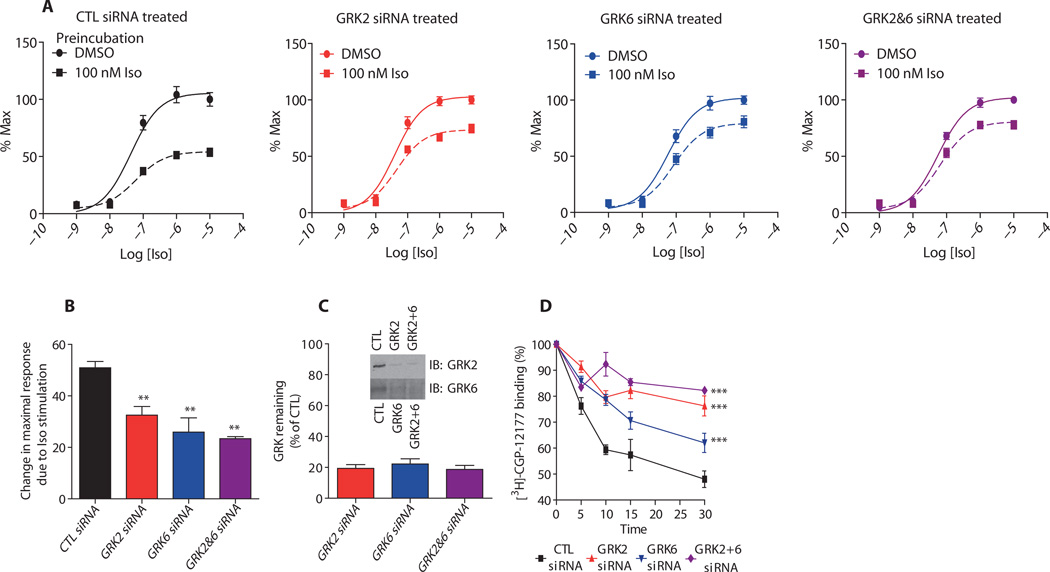Fig. 1.
The effect of knockdown of GRK2, GRK6, or both GRK2 and GRK6 on desensitization and internalization of the β2AR. (A) HEK293 cells stably transfected with the GloSensor reporter and the indicated siRNAs were pretreated with 100 nM isoproterenol for 5 min, washed two to three times over 10 min, and then assayed for cAMP accumulation after restimulation with isoproterenol at the indicated concentrations (10−9 to 10−4 M). The fits of the data are sigmoidal, and the amounts of cAMP were normalized within each group and plotted as percent of the maximal response achieved. (B) The data from (A) are shown here as the baseline-corrected changes in maximal response upon pretreatment with isoproterenol. All data shown are the means ± SEM on dose-response data performed in duplicate or triplicate for at least n = 6. Statistical significance was assessed by one-way analysis of variance (ANOVA) with Bonferroni post-test to compare each group versus CTL siRNA–treated cells (**P < 0.01). (C) Representative immunoblot (IB) for silencing of GRK2, GRK6, or both demonstrates the siRNA transfection efficiency. Quantification (SE ± SEM) of at least six independent siRNA transfections used for various experiment types is shown. (D) Effect of the indicated siRNAs on the internalization of the β2AR. Internalization was determined with 3H-CGP-12177 and ICI-118551 to detect nonspecific binding as described in Materials and Methods. The percent receptor internalized is shown as a loss of 3H-CGP-12177 binding, and the values represent the means ± SEM from at least three independent experiments. Statistical comparison of the curves was determined with two-way ANOVA between GRK siRNA–transfected cells and control cells (***P < 0.001).

